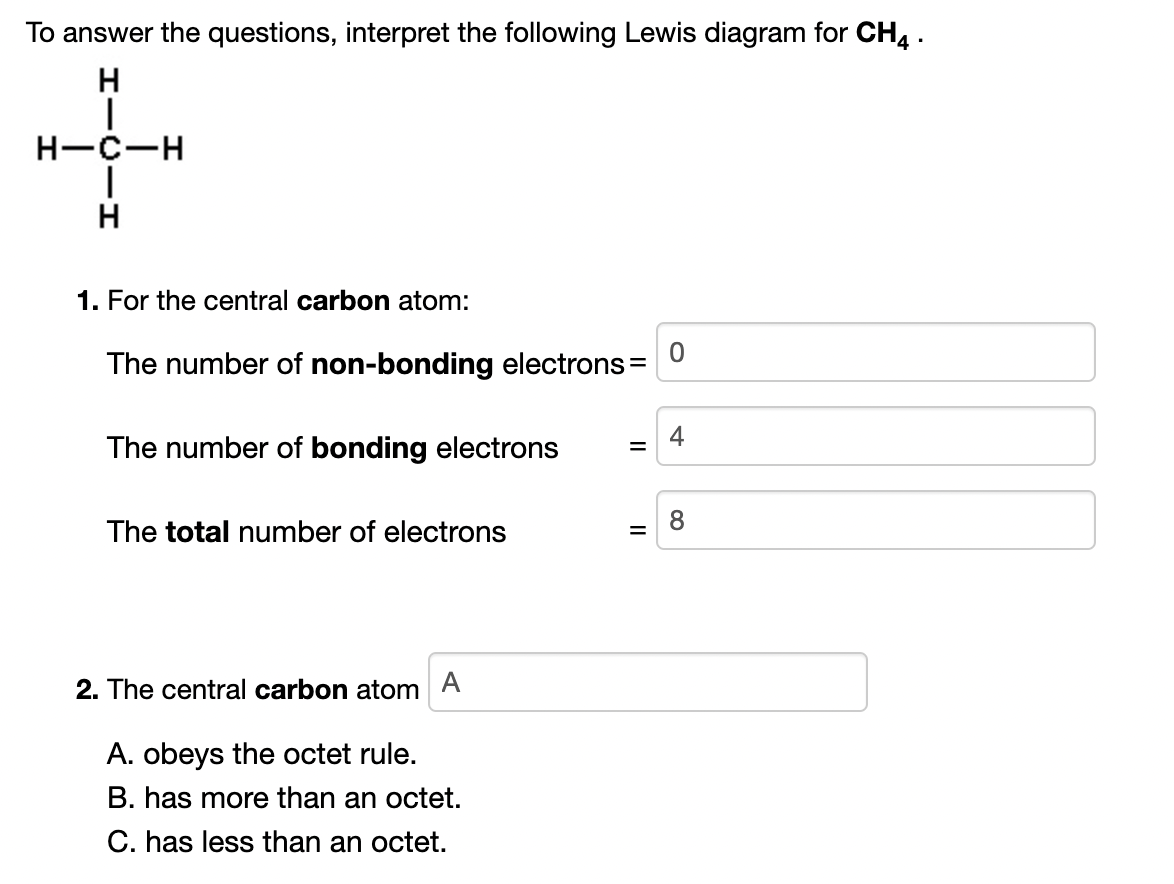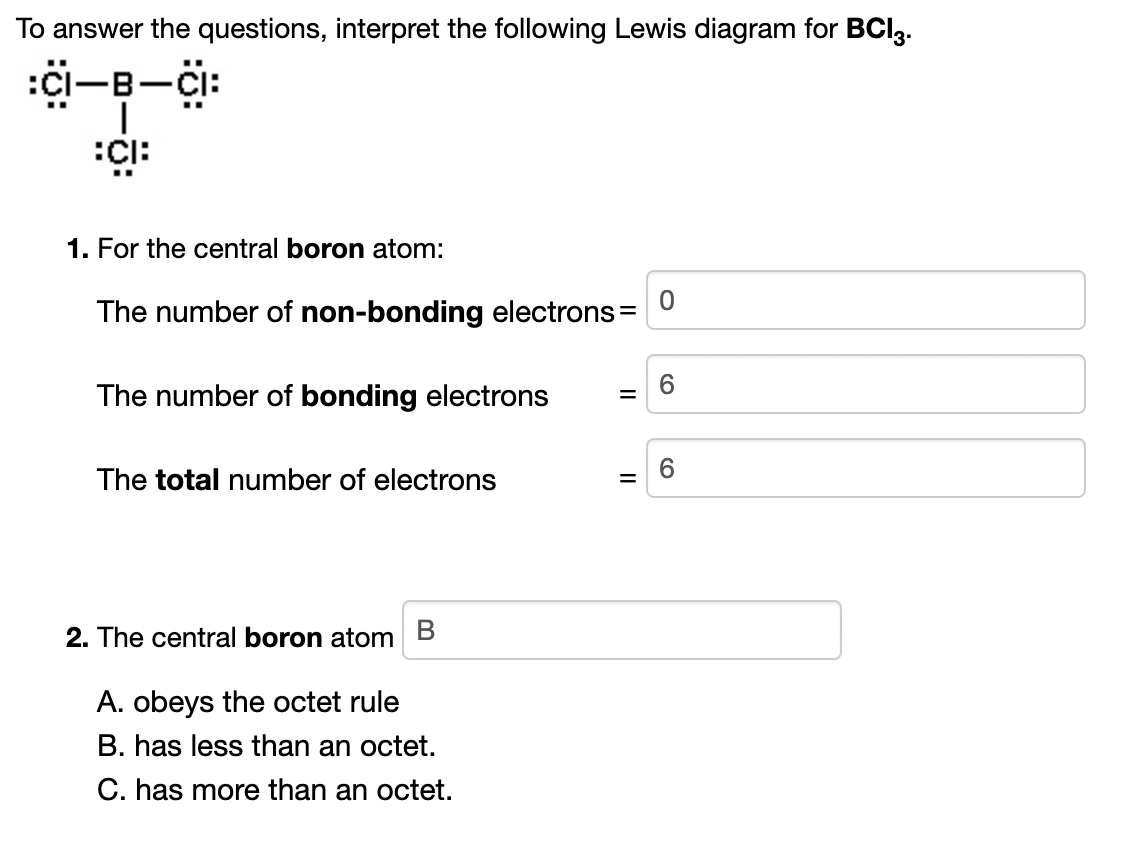o answer the questions, interpret the following Lewis diagram for CH4 . H H-C-H H 1. For the central carbon atom: The number of non-bonding electrons= 4 The number of bonding electrons The total number of electrons = 2. The central carbon atom A A. obeys the octet rule. B. has more than an octet. C. has less than an octet.
o answer the questions, interpret the following Lewis diagram for CH4 . H H-C-H H 1. For the central carbon atom: The number of non-bonding electrons= 4 The number of bonding electrons The total number of electrons = 2. The central carbon atom A A. obeys the octet rule. B. has more than an octet. C. has less than an octet.
Introductory Chemistry: An Active Learning Approach
6th Edition
ISBN:9781305079250
Author:Mark S. Cracolice, Ed Peters
Publisher:Mark S. Cracolice, Ed Peters
Chapter12: Chemical Bonding
Section: Chapter Questions
Problem 12.5TC
Related questions
Question
Are these correct

Transcribed Image Text:To answer the questions, interpret the following Lewis diagram for CH, .
H
H-C-H
1. For the central carbon atom:
The number of non-bonding electrons =
4
The number of bonding electrons
8
The total number of electrons
2. The central carbon atom
A
A. obeys the octet rule.
B. has more than an octet.
C. has less than an octet.

Transcribed Image Text:To answer the questions, interpret the following Lewis diagram for BCI3.
-B-Cl:
|
1. For the central boron atom:
The number of non-bonding electrons=
6.
The number of bonding electrons
6
The total number of electrons
2. The central boron atom
A. obeys the octet rule
B. has less than an octet.
C. has more than an octet.
II
Expert Solution
This question has been solved!
Explore an expertly crafted, step-by-step solution for a thorough understanding of key concepts.
This is a popular solution!
Trending now
This is a popular solution!
Step by step
Solved in 3 steps with 1 images

Knowledge Booster
Learn more about
Need a deep-dive on the concept behind this application? Look no further. Learn more about this topic, chemistry and related others by exploring similar questions and additional content below.Recommended textbooks for you

Introductory Chemistry: An Active Learning Approa…
Chemistry
ISBN:
9781305079250
Author:
Mark S. Cracolice, Ed Peters
Publisher:
Cengage Learning

Introductory Chemistry: A Foundation
Chemistry
ISBN:
9781337399425
Author:
Steven S. Zumdahl, Donald J. DeCoste
Publisher:
Cengage Learning

Chemistry: The Molecular Science
Chemistry
ISBN:
9781285199047
Author:
John W. Moore, Conrad L. Stanitski
Publisher:
Cengage Learning

Introductory Chemistry: An Active Learning Approa…
Chemistry
ISBN:
9781305079250
Author:
Mark S. Cracolice, Ed Peters
Publisher:
Cengage Learning

Introductory Chemistry: A Foundation
Chemistry
ISBN:
9781337399425
Author:
Steven S. Zumdahl, Donald J. DeCoste
Publisher:
Cengage Learning

Chemistry: The Molecular Science
Chemistry
ISBN:
9781285199047
Author:
John W. Moore, Conrad L. Stanitski
Publisher:
Cengage Learning

Chemistry for Today: General, Organic, and Bioche…
Chemistry
ISBN:
9781305960060
Author:
Spencer L. Seager, Michael R. Slabaugh, Maren S. Hansen
Publisher:
Cengage Learning

